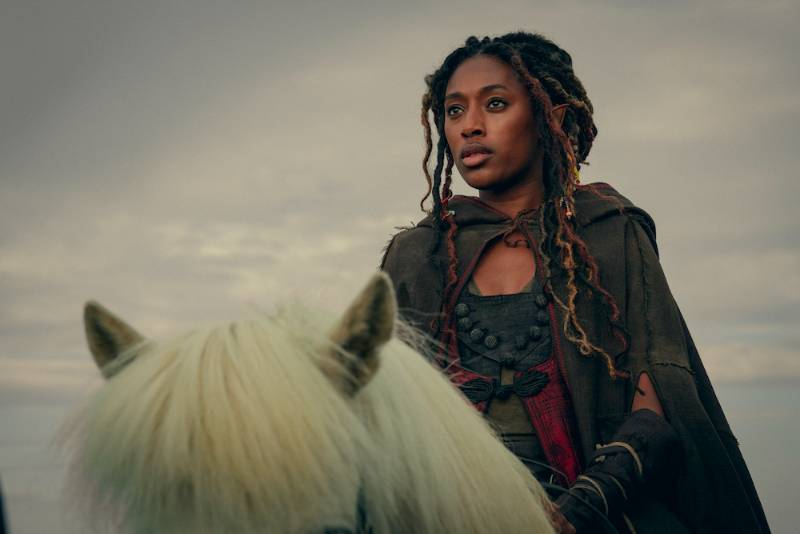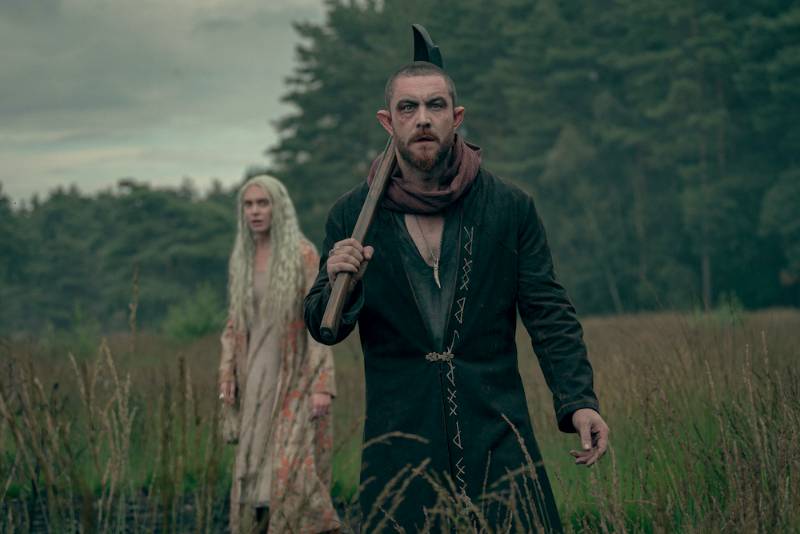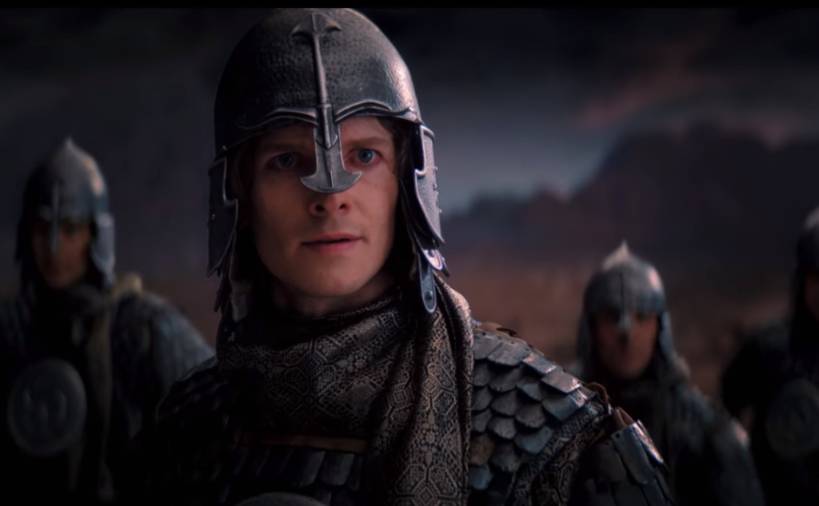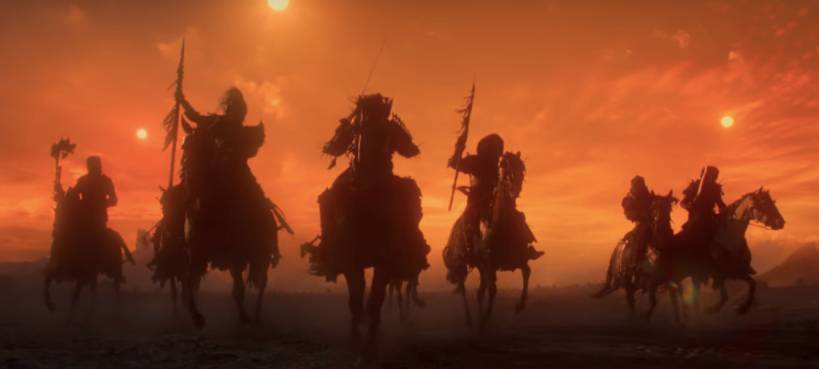The events of “The Witcher” are preceeded by more than a thousand years in “The Witcher: Blood Origin,” a prequel series on Netflix. The television show is set in an universe where humans have not yet come to rule. In actuality, they are nowhere to be found. The elves still govern the planet, but a number of factors eventually bring them to an end. Blood Origin’s four episodes not only explain a number of mysteries from “The Witcher,” but they also introduce a number of individuals who will play significant roles in Ciri and Geralt’s tale. Here is what the conclusion implies for the world of “The Witcher.” Spoilers follow.
The Witcher: Blood Origin Recap
Elven warriors Eile and Fjall, who are members of competing clans, have each been expelled for a different reason. When a great power grab occurs in Xin’trea, they are compelled to return and carry out their duties as the guardians of elf realms. Sage Balor and Princess Merwyn plan to assassinate the rulers of the three countries, and Merwyn is made the Empress in the process. They decimate Eile and Fjall’s clans throughout this process, which prompts them to plot Merwyn’s retaliation.
Sage Balor utilises the Monolith, which gives him access to other worlds, to acquire Chaos magic at a horrible cost while Merwyn tries to exert some authority over her newly discovered realm. Eile and Fjall expand their band of warriors. This voyage finishes in Xin’trea and is joined by Eile’s former tutor Scian, a sellsword named Brother Death, a dwarf named Meldof and her hammer Gwen, and celestial twin magicians Zacare and Syndril. This causes a disastrous sequence of events that forever alters the appearance of the Continent.
The Witcher Blood Origin Ending: What Does Ithlinne’s Prophecy About Eile’s Child Mean?
In the end, things go surprisingly easily for Eile, Fjall, and the others as they launch an assault on Merwyn. The creature from another world is slain by Fjall, who has been transformed into the first-ever Witcher by the spells Zacaré and Syndril. He transforms into a beast, nevertheless, due to his inability to control the Chaos energy from the other realm. He is murdered by Eile before he can do more harm.
Zacaré and Syndril work together to stop Balor in the meantime. In order to destroy the Monolith and seal the window between the worlds, Syndril forms a relationship with him and the Monolith. However, the plot goes awry when the Monolith is destroyed, causing a rift between the worlds through which everything spills. The Conjunction of the Spheres that follows brings humans and monsters from other planets to the Continent and permanently alters the path of events.

The Conjunction of the Spheres, which has already resulted in the appearance of people, is obviously meant by the phrase “the period of the spheres.” By this time, the monster infestation has also become a concern. An elf is seen posting job ads for monster hunters, hinting that the development of true Witchers is either about to occur or has already begun. The Aen Seidhe, or the elves, are also mentioned in the prophecy; by the time Geralt and Ciri arrive, they will no longer be common on the planet they formerly governed.
It’s also noteworthy that the expressions “set adrift in time” and “lost across the skies” refer to Eredin and his soldiers, who were propelled into another dimension by Balor. Nobody knows what happened to them, but the fact that Ithlinne mentions them in her prophesies suggests that their narrative is far from ended. They will return, albeit they won’t recognise the elves they once were. Additionally, it creates a clear link between “Blood Origin” and Season 3 of “The Witcher,” in which Eredin and his followers will make a comeback as The Wild Hunt.

Her ancestry is established in “Blood Origin,” which claims that she is a direct descendent of Eile and Fjall’s kid, who possesses both elf blood and the Chaos energy that resulted from Fjall’s metamorphosis. As a result, Ithlinne’s prophecy in “Blood Origin” not only confirms what we already know about Ciri and her future, but it also provides us with some information about the origins of her powers. These answers will help to further explain more aspects of her powers, which will undoubtedly be covered in upcoming seasons of “The Witcher.”
What Happens to Eredin?
Blood Origin has a lot of action, but the most exciting parts occur towards the very end. While Ithlinne’s prophecy serves as a sort of road map for Ciri’s future, another scene provides us with information about a figure who will play a significant role in upcoming seasons of “The Witcher.” Eredin, who also appears in Ithlinne’s prophecy as the person lost in space and time, is the person in question.
Initially working with Sage Balor to seize power of Xin’trea, Eredin was revealed to be a soldier who later sided with Merwyn after she discovered his relationship with Brian, a lowborn elf. In an effort to locate a planet that can alleviate the famine on the Continent, Merwyn sends Eredin and a group of soldiers with Balor there. The Empress intends to attack the other worlds after that and “civilise” them using elven art and culture.
No matter how ambitious, Merwyn’s schemes fail when Balor betrays her as was to be expected. He murders Fenrick once he gets there, and the sacrifice endows him with the power of Chaos energy. Eredin and his warriors are sent into yet another world with the intention that they “burn for all eternity.” Later, Eredin discovers a skull helmet that resembles the Wild Hunt’s helmet from Season 2 of “The Witcher.”
Eredin’s tragedy provides us with a backstory for the character who would eventually become known as the King of the Wild Hunt, even though the narrative has yet to examine the nature and origins of The Wild Hunt. They are spectral creatures that are seen as a sign of impending conflict, according to the writings. They were elven warriors, also known as the Wraiths of Mörhogg, who travelled to several worlds in search of slaves to bring back to their home. However, it appears that the programme will have its own interpretation of the Wild Hunt, and a completely new picture of who they were may emerge.
Extrapolating from the conclusion of “Blood Origin,” it appears that Eredin and his warriors will burn in flames forever as a result of Balor’s curse. Eredin is stranded in a strange universe that appears to have already come to an end and has no way out. He will need to adjust to the new reality and the new version of himself. That is implied by the helmet he is wearing. It also explains how he will still be alive when Ciri opens the gateway into the realm he is imprisoned in after 1200 years because he is cursed for all eternity.
This also has a direct connection to the Season 2 finale of “The Witcher,” in which Ciri is first encountered by the Wild Hunt. It’s possible that the Wild Hunt picked up on Ciri’s energy in the same way as Syndril and Zacare did when they felt the otherworldliness of Chaos energy in their world. Eredin would have seen Ciri using magic to travel between the worlds for the first time in a very long time, so perhaps he and the Wild Hunt will focus their attention on her. They require her abilities because they cannot escape the universe in which they are imprisoned without them.
Eredin’s fate is sealed by the conclusion of “Blood Origin,” which places him on a course that will result in the events of “The Witcher” Season 3. Eredin is slated to be the antagonist of Ciri’s story, but his prequel series arc does a wonderful job of introducing us to him and revealing his character motivations.




